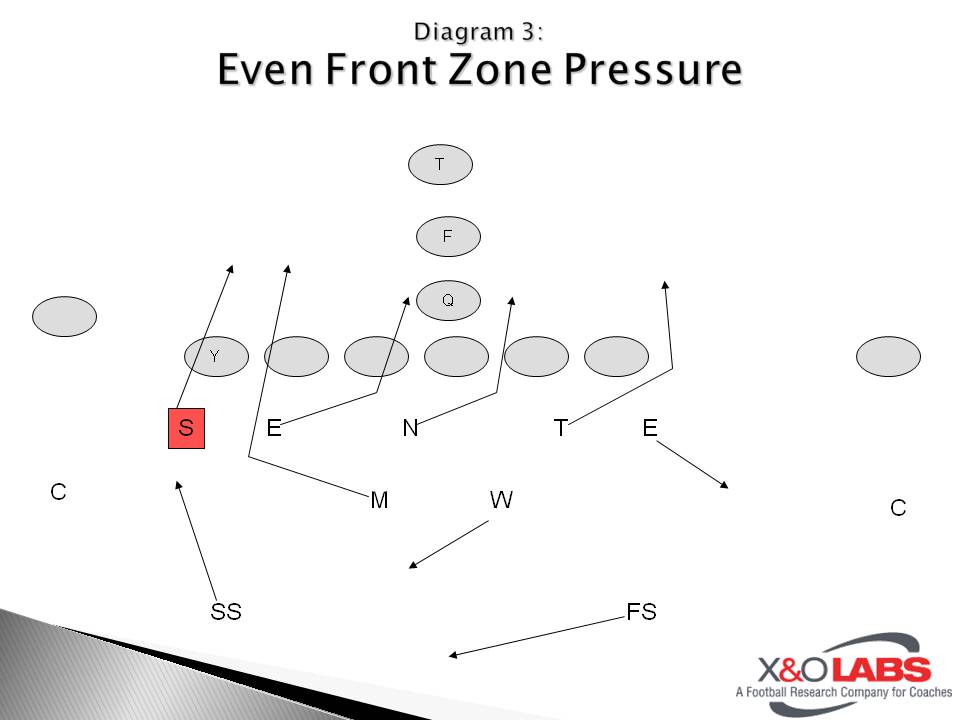By Mike Kuchar
Senior Research Manager
X&O Labs
Researchers' Note: You can access the raw data of this report - in the form of graphs - by clicking here to read: 9-Technique Statistical Analysis Report.
As a follow up to last week’s report on training your 9-techinque to play the run game (click here to read the report), this week’s research will center on how that 9-technique player could play the pass game. Again, it’s important to clarify that a 9-technique is any player on the outside tip of the tight end, or third player in a three man surface. For the purpose of this report, we’ll focus on the outside linebacker type in an even (Diagram 1) or odd (Diagram 2) front.
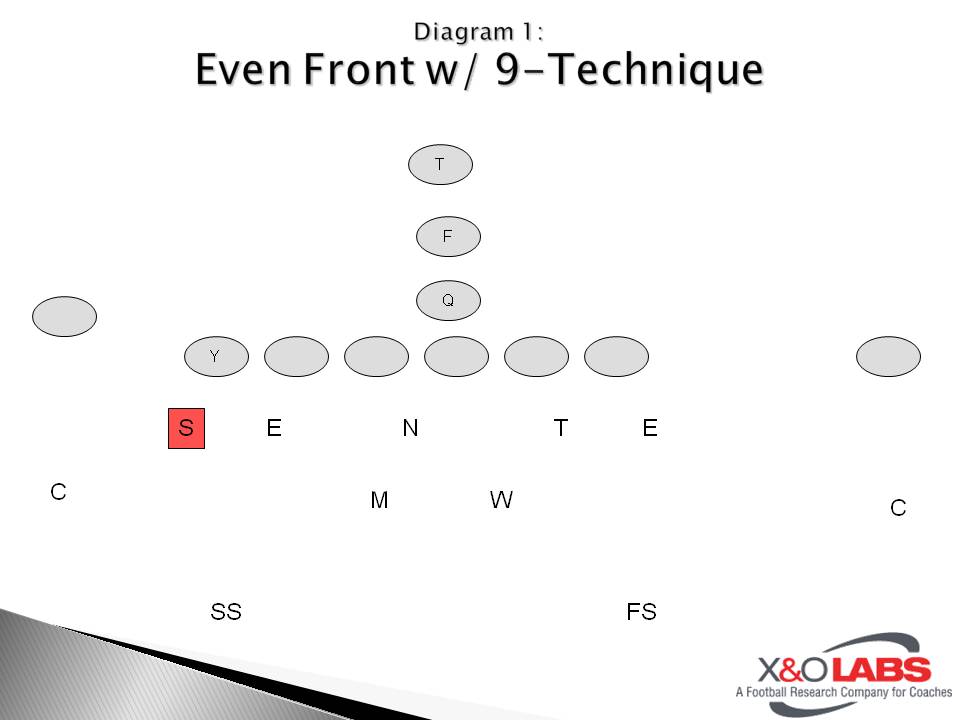
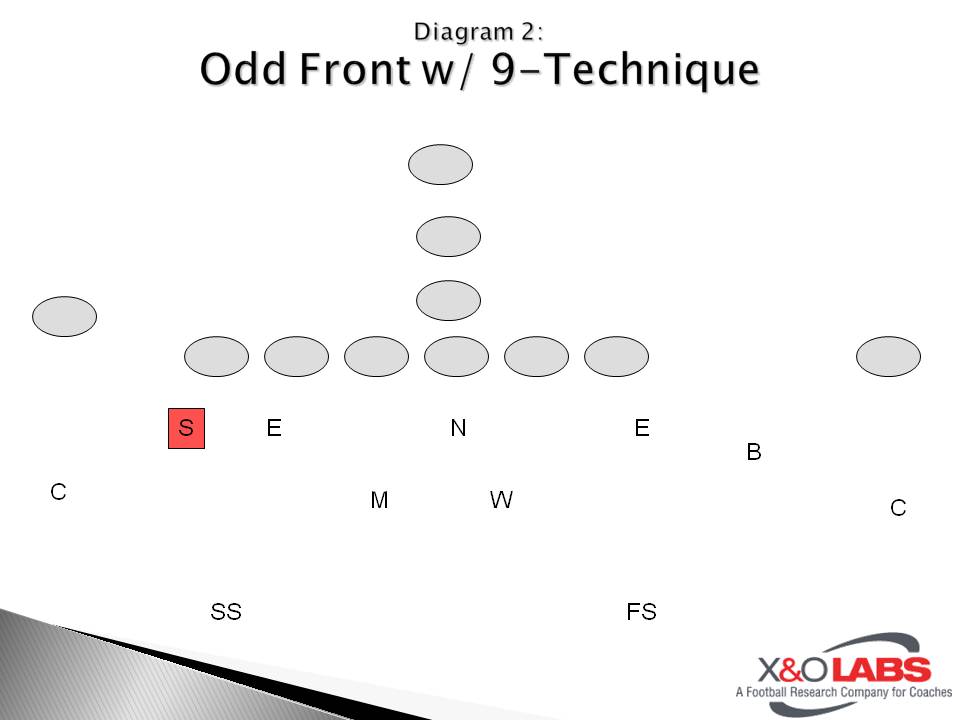
As we detailed in the last report, playing the 9-techinque position is so vital defensively because you must have the speed to rush the passer while having the strength to handle the D gap in the run game. Combine this with the athleticism required to play zone coverage with the needed speed to play man coverage and you see how important it is to have a player with all these skills. We wanted to know which kind of player coaches look for when evaluating the 9-techinque defender, so we asked. We came up with the following results below. In no particular order:
Qualities of a 9-Technique Defender (Based on Coaches’ Responses)
- "I used to be a believer in the bigger DL type body to play end, but over the past years, we have had more success with the faster OLB type." - Kurt Gielink
- "Our most successful 9-tech were 6-3 to 6-4 basketball swing player type bodies." - Keith Albers
- "Like any other defensive position the best eagle defenders we have understand how to read blocks. They have to either squeeze a down block, fight a reach block, or see high hat from tackle and get to the flats in our cover 3." - Anonymous Feedback
- "Fearlessness, usually your best athlete. Someone who is big enough to take on a tight end or even a tackle, but also someone who can drop in coverage, keep contain, and occasionally play man coverage." - Gary Alleva
- "Too strong for backs to block & too quick for OTs to block. Could out leverage TEs"- Tony Demeo
- "We like for this player to be physical and quick. He should never get reached and must be able to react flat down the LOS on any down block from the TE. We like for him to be a great speed rusher because his distance from the OT makes that player's pass protection difficult vs. speed."- Rick Wimmer
- "Relatively long and tall kids. Maybe a bit slow to play OLB consistently but better feet than typical defensive linemen." - John Talley
- "Our Sam LB is a player most often in a nine technique. We would prefer not to substitute personnel and our Sam also has to play an Apex technique when #2 is removed. Because of this our Sam is usually a bigger safety who has the ability to play in space. Since he is a bigger safety he usually is smaller than the TE and because of this we play him wider when he has to align in a nine technique. The best Sam that I have coached in my four years as a defensive coordinator was about 6'3 215 and former high school safety." - Scott Sperone
- "We would like a kid that is athletic and can run, but it’s also important that they can use their hands and understand leverage. We won't sacrifice technique for athleticism though. At our level (high school) it’s more important to squeeze and wrong arm than it is to pass rush." - Anonymous Feedback
- "Our 9-tech player was more like our weak side LB. While most of the time he was a rush end, we did use him for Zone and even Man coverage’s (Man coverage on TE). We felt someone similar to that of the Will LB could handle any of the calls/coverage’s we would use from this technique and wouldn't have to switch him out or be out of position if we had to change our call at the LOS." - Daryl Taaffe
When we started our research, we were under the assumption that the 9-technique defender (if not a defensive lineman) was mainly a pass defender and not a rusher, particularly in odd front defenses. So, we weren’t that surprised when we got the results of our tally below.
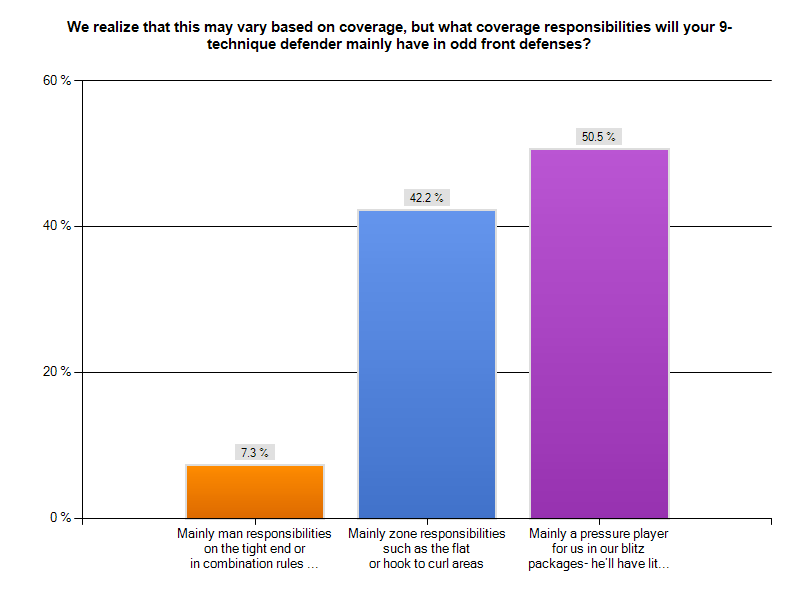
The results between pass defenders and rush defenders in the odd front were pretty much even, mainly because those defenders are usually linebackers in nature. But when we polled our coaches that run the even defense we’ve found those 9-techique defenders in the Under defense are pass-rushers first, and coverage players second.
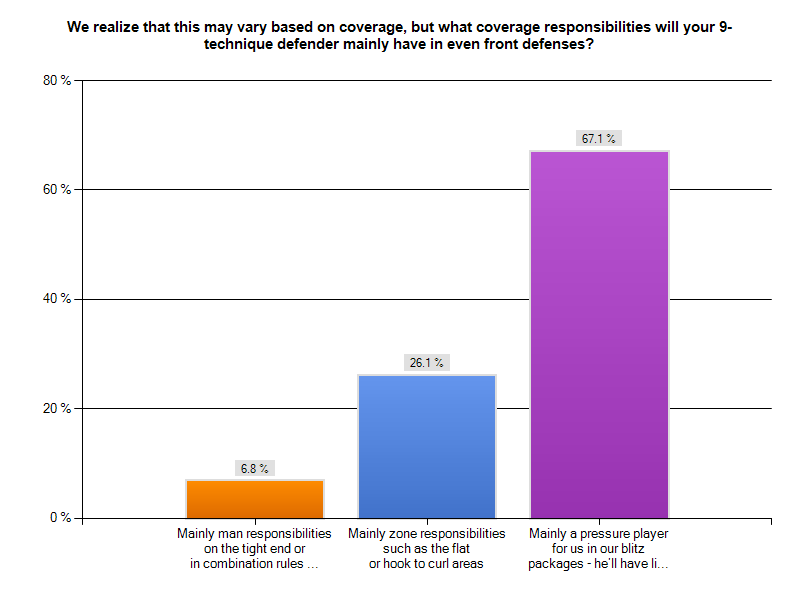
So, because our results were split between being pass defenders and pass rushers, in order to accommodate the needs of both defensive structures, we’ll explain both scenarios of the 9-technique being a coverage player as well as a rusher below. Since the majority of 9-techniques are pass rushers, we’ll start there.
Case 1: Using the 9-Technique as a Rush/Contain Player
Through our research, we’ve found that the 9-technique outside linebacker is rarely a pass rusher unless in pressure situations. In most of these situations, coaches will play some form or three deep pressure behind it by dropping a safety (Diagram 3). 